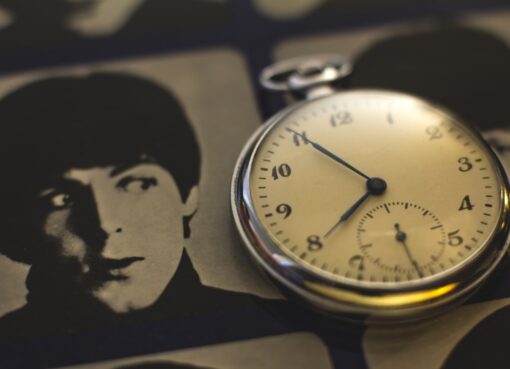The Significance of the Mangalsutra in Indian Culture

The mangalsutra has a rich and ancient history in Indian culture, dating back thousands of years. Its origins can be traced to the Vedic period, where it was known as “Mangalya Sutra,” which translates to “sacred thread.” During this time, the mangalsutra was a simple yellow thread, symbolizing the bond of marriage and the well-being of the husband. Over time, the mangalsutra evolved into a more elaborate and ornate piece of jewelry, incorporating gold, black beads, and sometimes diamonds.
In ancient India, the mangalsutra was not only a symbol of marriage but also a form of protection for the wife. It was believed that the black beads and gold in the mangalsutra had the power to ward off evil spirits and protect the husband from harm. The mangalsutra was also seen as a way to signify the social and marital status of a woman, as it was worn prominently around her neck for all to see. As Indian society evolved, so did the mangalsutra, with different regions and communities adding their own unique touches to this sacred piece of jewelry.
The historical significance of the mangalsutra is deeply rooted in Indian tradition and has been passed down through generations. It continues to hold a special place in Indian culture, symbolizing the sacred bond of marriage and the commitment between husband and wife.
Key Takeaways
- The mangalsutra has its historical origins in ancient Indian scriptures and has been a symbol of marriage for centuries.
- It symbolizes the sacred bond of marriage, with the black beads representing protection and the gold pendant representing prosperity and fertility.
- The mangalsutra plays a significant role in Indian marriage ceremonies, where it is tied around the bride’s neck by the groom as a symbol of their union.
- In modern Indian society, the mangalsutra has evolved to reflect changing fashion trends and personal preferences, with variations in design and materials.
- Different regions in India have their own unique styles of mangalsutra, reflecting the diversity of Indian culture and traditions.
Symbolism and Meaning Behind the Mangalsutra
The mangalsutra holds deep symbolism and meaning in Indian culture, representing the sacred union of marriage and the lifelong commitment between husband and wife. The black beads in the mangalsutra are believed to have protective powers, warding off negative energy and bringing good luck to the couple. The gold pendant on the mangalsutra is often adorned with intricate designs, symbolizing prosperity, fertility, and marital bliss.
In addition to its protective and auspicious qualities, the mangalsutra also serves as a visible symbol of a woman’s marital status. It is worn around the neck, close to the heart, signifying the eternal bond between husband and wife. In Indian tradition, the mangalsutra is considered to be as important as the wedding ring in Western cultures, if not more so. It is a constant reminder of the vows exchanged during the marriage ceremony and is worn with pride by married women.
The symbolism behind the mangalsutra is deeply ingrained in Indian society and is a testament to the enduring significance of marriage in Indian culture. It serves as a tangible representation of love, commitment, and tradition, and is cherished by women across India.
Role of the Mangalsutra in Indian Marriage Ceremonies
The mangalsutra plays a central role in Indian marriage ceremonies, where it is considered an essential part of the wedding rituals. During the wedding ceremony, the groom ties the mangalsutra around the bride’s neck, symbolizing his commitment to her and their union in marriage. This ritual is known as “Mangalya Dharanam” and is one of the most significant moments in an Indian wedding.
The act of tying the mangalsutra is accompanied by sacred chants and blessings from the priest, signifying the beginning of a new chapter in the couple’s lives. The mangalsutra is then worn by the bride as a symbol of her married status, and it is customary for her to wear it every day as a mark of respect for her husband and their union.
In some Indian communities, the mangalsutra is also passed down through generations, making it an heirloom that carries with it the blessings and good wishes of previous generations. The role of the mangalsutra in Indian marriage ceremonies is deeply rooted in tradition and is a poignant reminder of the sacred bond between husband and wife.
Evolution of the Mangalsutra in Modern Indian Society
In modern Indian society, the mangalsutra has evolved to reflect changing trends and tastes while still retaining its traditional significance. While traditional designs featuring black beads and gold pendants remain popular, contemporary variations of the mangalsutra now incorporate diamonds, gemstones, and intricate patterns to appeal to modern sensibilities.
Many women today opt for lightweight and versatile mangalsutras that can be worn on a daily basis, while others choose more elaborate designs for special occasions. Additionally, there has been a growing trend towards personalized mangalsutras that are customized to reflect the individual style and preferences of the wearer.
Furthermore, with the influence of global fashion trends, there has been an emergence of fusion mangalsutras that blend traditional elements with modern aesthetics. These fusion mangalsutras often feature innovative designs that cater to a younger generation while still honoring the sanctity of marriage and tradition.
The evolution of the mangalsutra in modern Indian society reflects a balance between preserving cultural heritage and embracing contemporary influences. It continues to be an integral part of Indian weddings and married life while adapting to changing lifestyles and fashion preferences.
Regional Variations and Styles of the Mangalsutra
The mangalsutra varies in style and design across different regions of India, each with its own unique cultural influences and traditions. In North India, traditional mangalsutras are characterized by intricate gold pendants adorned with gemstones or enamel work, often complemented by black beads. These designs are often elaborate and reflect the opulence of North Indian weddings.
In South India, mangalsutras are typically simpler in design, featuring small gold pendants with minimal embellishments. The focus is on craftsmanship and purity of gold, with some designs incorporating religious motifs such as the goddess Lakshmi or symbols of prosperity.
In Western India, particularly in Maharashtra, mangalsutras are known for their distinct black beads arranged in patterns along with gold pendants that are often shaped like traditional symbols such as a conch shell or a lotus flower. These designs are steeped in cultural significance and are considered auspicious for married women.
Eastern India also has its own unique styles of mangalsutras, with designs that are influenced by tribal art forms and local customs. These mangalsutras often feature bold patterns and motifs that reflect the rich cultural heritage of the region.
The regional variations in styles of mangalsutras highlight the diversity of Indian culture and traditions, with each design carrying its own symbolic meaning and aesthetic appeal.
Contemporary Significance and Trends of the Mangalsutra

In contemporary Indian society, the mangalsutra continues to hold immense significance as a symbol of marriage and marital commitment. While it remains an integral part of traditional wedding ceremonies, there has been a shift towards incorporating modern elements into mangalsutra designs to cater to changing preferences.
One notable trend is the rise of customizable mangalsutras that allow women to personalize their jewelry according to their individual style. From minimalist designs to statement pieces, customizable mangalsutras offer a wide range of options for brides to express their personality while upholding tradition.
Another trend is the increasing popularity of lightweight and everyday wear mangalsutras that are practical for modern lifestyles. These designs are often versatile enough to be worn at work or during social gatherings, reflecting a desire for jewelry that seamlessly integrates into daily life.
Additionally, there has been a growing interest in eco-friendly and sustainable mangalsutras that are crafted using ethically sourced materials and environmentally conscious practices. This trend reflects a broader societal shift towards ethical consumerism and responsible fashion choices.
The contemporary significance and trends surrounding the mangalsutra demonstrate its enduring relevance in Indian culture while adapting to contemporary values and lifestyle choices.
Challenges and Controversies Surrounding the Mangalsutra in Indian Culture
Despite its cultural significance, the mangalsutra has not been immune to challenges and controversies in modern Indian society. One such issue revolves around gender equality and women’s autonomy, with some critics arguing that the pressure on women to wear a symbol of marital status perpetuates traditional gender roles.
There have also been debates surrounding the commodification of marriage through extravagant mangalsutra designs that prioritize materialism over emotional value. This has led to discussions about redefining the symbolism behind the mangalsutra to focus more on love and companionship rather than material possessions.
Furthermore, there have been instances where women have faced societal pressure or judgment for not wearing a mangalsutra, raising questions about individual choice and freedom within marriage. These challenges highlight broader conversations about gender dynamics and societal expectations within Indian culture.
Despite these challenges, many women continue to embrace the tradition of wearing a mangalsutra as a symbol of their commitment to marriage while also advocating for greater agency in expressing their personal style through customizable designs.
In conclusion, the mangalsutra holds deep historical significance as a symbol of marriage in Indian culture. Its evolution over time reflects changing societal values while retaining its traditional symbolism. The regional variations in styles highlight the diversity of Indian traditions, while contemporary trends demonstrate its enduring relevance in modern society. Despite challenges and controversies, the mangalsutra continues to be cherished by women across India as a tangible representation of love, commitment, and tradition.
Discover the significance of the mangalsutra in Indian culture and its enduring symbolism in marriage rituals. This traditional necklace holds deep cultural and spiritual meaning, representing the bond between husband and wife. To learn more about the cultural significance of jewelry, including the mangalsutra, check out this insightful article on coppercleanus.com. Explore the rich history and traditions behind these meaningful adornments.
FAQs
What is a mangalsutra?
A mangalsutra is a traditional Indian necklace that is worn by married women as a symbol of their marital status. It is typically made of black and gold beads, with a pendant or locket at the center.
What is the significance of a mangalsutra?
The mangalsutra is considered a sacred symbol of marriage and is believed to bring good luck and prosperity to the couple. It is also a symbol of the husband’s love and commitment to his wife.
How is a mangalsutra worn?
A mangalsutra is usually worn around the neck, with the pendant resting on the chest. It is often paired with traditional Indian attire, especially during religious ceremonies and festivals.
Is the design of a mangalsutra standardized?
While the basic concept of a mangalsutra remains the same, the design and style can vary based on regional and cultural differences. Some may have intricate designs, while others may be simpler in appearance.
Can a mangalsutra be worn by unmarried women?
Traditionally, the mangalsutra is worn by married women as a symbol of their marital status. Unmarried women do not typically wear a mangalsutra, as it is considered a symbol of matrimony.
Leave a Reply
You must be logged in to post a comment.



Leave a Comment